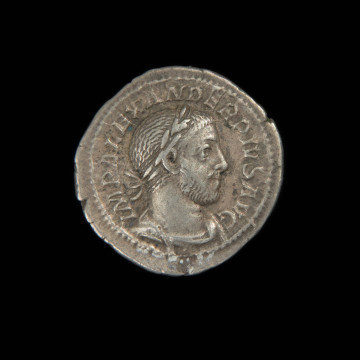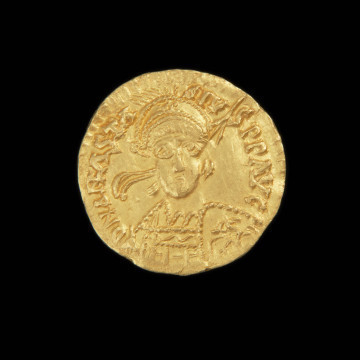
Aureus
162 — 163
National Museum in Szczecin
Part of the collection: Antique coins
The political and economic crisis of the Roman Empire in the 3rd century was reflected in the monetary system. The devaluation of the denarius resulted in the development of a system of middle denominations. In 214-215, Emperor Caracalla introduced a new monetary unit, the antoninianus, with a face value of 2 denarii. The coinage, minted from soft silver, was gradually transformed into worthless copper money due to the lowering of the precious metal content. By the end of the 1560s, the antoninianus weighed around 3g and contained only 2-3% silver. The stamps traditionally feature the Emperor's image and personifications of ideas and virtues, with military elements particularly prominent during the reign of Philip I the Arab (244-249). Philip, elected the Emperor by the soldiers' will, had to flatter the military and count on their loyalty. Correct relations with the Senate did not guarantee the Emperor a peaceful reign. Ousted from power by rebellious soldiers, he died in battle in 249. On the series of antoninianus, the Emperor was depicted wearing a radiant crown, an attribute of the sun and personified the divine origin of imperial power. The portrait is accompanied by a short legend with the name and titles of emperor and augustus. It is worth recalling that the epithet emperor was given to rulers at the will of their soldiers, while the title augustus was granted with the consent of the Senate. On the reverse of the museum copy, the standing personification of fidelity and loyalty (Fides) is accompanied by a battle sign (vexillum) and a banner, which together with the legend FIDES EXERCITUS (Fides the brave) give the image a military significance. Fides enjoyed a state cult in Rome dating back to the 3rd century BC. In the early period of the Empire the goddess appeared 'civilly', as Fides Publica with a basket of fruits and grains, later with the exceptionally more substantial role of the army she transformed into an image with military connotations. The recourse to Fides in the final stage of Philip the Arab's minting may have stemmed from a sense of the weakness of his own position.
Genowefa Horoszko
Other names
Antoninianus
Author / creator
Dimensions
cały obiekt: height: 2,1 mm, diameter: 22,2 mm
Object type
coin
Technique
minting
Material
silver
Creation time / dating
Creation / finding place
Owner
National Museum in Szczecin
Identification number
Location / status

162 — 163
National Museum in Szczecin

231 — 235
National Museum in Szczecin

471 — 526
National Museum in Szczecin
DISCOVER this TOPIC
National Museum in Lublin
DISCOVER this PATH
Educational path